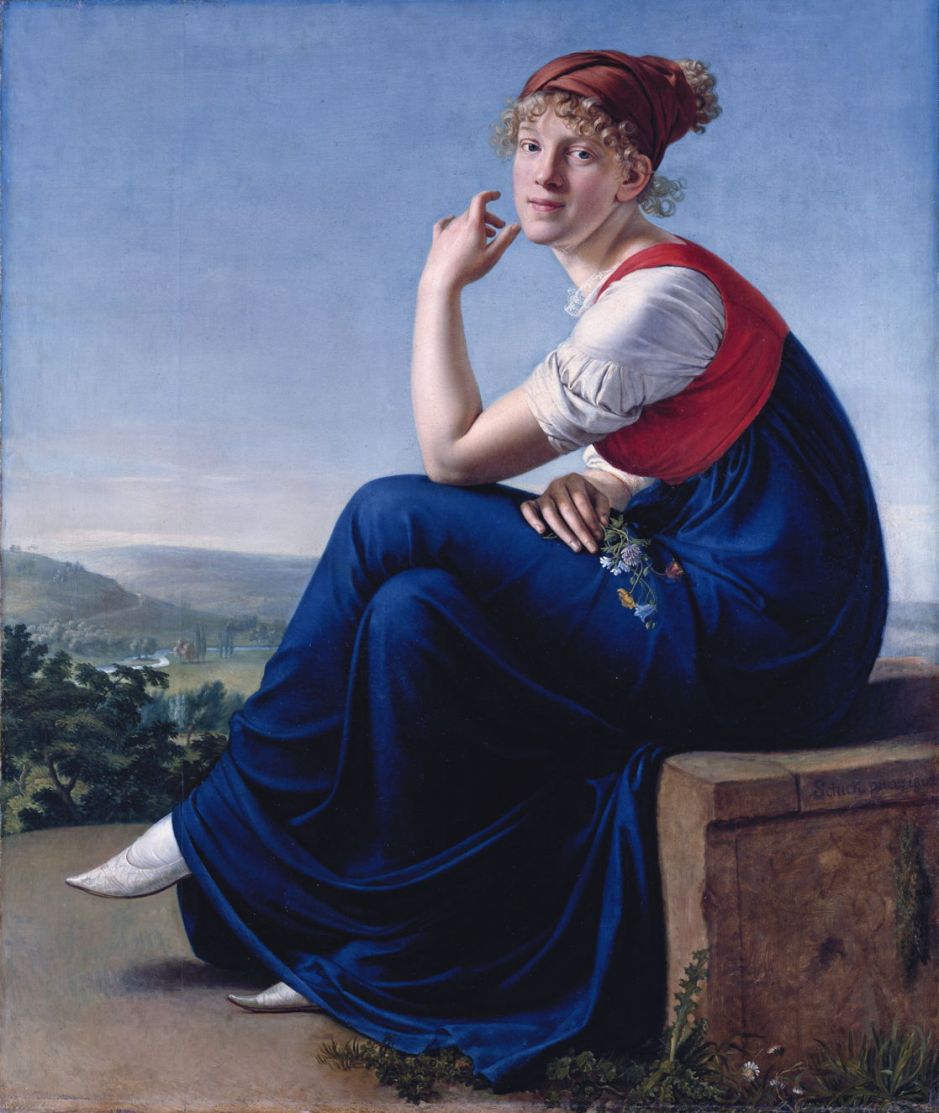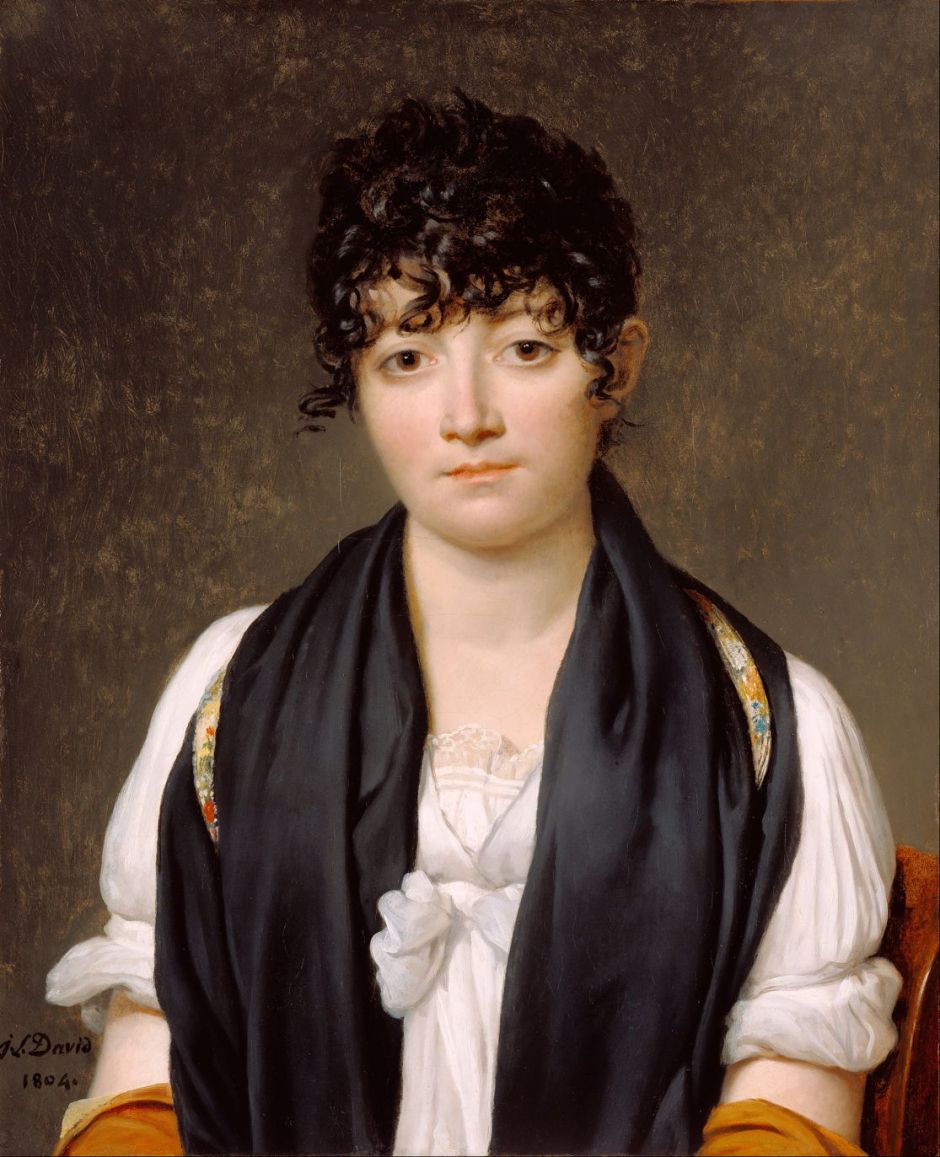Each time that I think that I have finally assembled an outline account of the use of visible brushstrokes in painting, I seem to stumble across more interesting evidence.
Having, I hope, built a reasonable picture of their occurrence in late Renaissance Italy, and the Venetian tradition possibly extending into the late eighteenth century, I found a copy of Hollander’s (2002) book on dress and drapery in paintings, and was immediately struck by the painterly style of Sir Joshua Reynolds’ portraits at around the same time as Francesco Guardi was being painterly with his Venetian capriccios.
This sent me to Davis & Hallett’s (2015) recent account of Reynolds, which confirmed that his portraits did contain abundant visible brushstrokes. But let me start with his contemporary and rival, Gainsborough.
Thomas Gainsborough (1727–1788)

Gainsborough’s portrait of Ann Ford (later Mrs. Philip Thicknesse) (1760), above and detail below, shows plentiful brushstrokes, particularly towards the lower edge of her dress.


His portrait of Mary Little, Later Lady Carr (c 1763) is similarly painterly in her dress. But Gainsborough’s reputation was for painting in thin layers, and for the fine detail in his landscapes, not this Venetian boldness.

Joshua Reynolds (1723–1792)
Alexandra Gent’s chapter in Davis & Hallett (2015) makes it clear that Reynolds was influenced, in his painting technique, by the late Rembrandt and by Titian’s bravura brushwork. She writes:
“Over his career Reynolds became a masterful handler of paint. Vigorous, textured brushmarks are frequently visible in thick passages of paint and testify to his often dynamic painting style.”
“Reynolds frequently used stiff paint, laid on in swift brushstrokes, to produce textured effects and broken lines, in a technique that surely reflects his admiration for Titian’s rapid paint application.”
(pp 46, 47.)

In his portrait of Lady Elizabeth Delmé and Her Children (1777-9), above and detail below, he does just that, and not just in the clothing, but in hair, and the background.


So too in Elizabeth, Countess of Warwick (c 1780), above and detail below, in her hat and its extraordinary ribbons and feathers.

However, accounts of how Reynolds’ portraits were made suggest that this brushwork may not be entirely his own work. Whilst Reynolds undertook the painting of the face and other key parts of the subject, clothing may have been painted from a model, by one of his pupils, Giuseppe Marchi his studio assistant, or by Peter Toms, who worked as a specialist drapery painter. So I have cast my net wider, and looked at other portraitists who should not have shared such practice.
Angelica Kauffmann (1741-1807)

Another hugely popular portrait painter of the day, Angelica Kauffmann was Swiss by birth, but took Europe by storm from London. Her Portrait of Eleanor, Countess of Lauderdale (c 1780-1) is contemporary with Reynolds’ work, and if anything even more painterly in her treatment of the clothing – but only in her portraits, not in her history painting.

Gottlieb Schick (1776–1812)

Working slightly later, first in Germany, then in David’s studio in Paris, his Heinrike Dannecker geb. Rapp (1802) shows not the slightest trace of any brushstrokes.

Jacques-Louis David (1748-1825)

Looking at David’s paintings, he showed no tendency to the painterly in his history and other narrative works, but brushstrokes start to appear in the hair of Suzanne Le Peletier de Saint-Fargeau (1804).

Jean Auguste Dominique Ingres (1780–1867)

Ingres leaves barely a trace of his marks in his Portrait of Princess Albert de Broglie (1853), although by now he is painting at the time that Impressionism was being conceived in the works of Boudin and Jongkind.

James Tissot (1836–1902)

James Tissot’s Portrait of Mrs Catherine Smith Gill and Two of her Children (1877) shows how painterly were his textiles, hair, and background.

Conclusions
It now appears that there were painterly painters in Europe from about 1500 onwards, right up to the changes brought by Impressionism. At first they were probably Venetian, or influenced by Venetian style, who were exploring the ability of oil paint to model different surface textures. This spread through Italy, but at first gained little support in northern Europe until Rembrandt started to push the envelope in his later years.
Painterly styles remained centred on Venice, but in the north the portrait painters also adopted them in the eighteenth century. They were there limited to portraits, and were avoided in landscape, history painting, etc. They became less frequent with the advent of neoclassicism, but flowered fully in the precursors of Impressionism.
References:
Davis L & Hallett M (2015) Joshua Reynolds: Experiments in Paint, The Wallace Collection and Paul Holberton. ISBN 978 0 9007 8575 7.
Hollander A (2002) Fabric of Vision. Dress and Drapery in Painting, The National Gallery Company. ISBN 1 85709 907 9.

